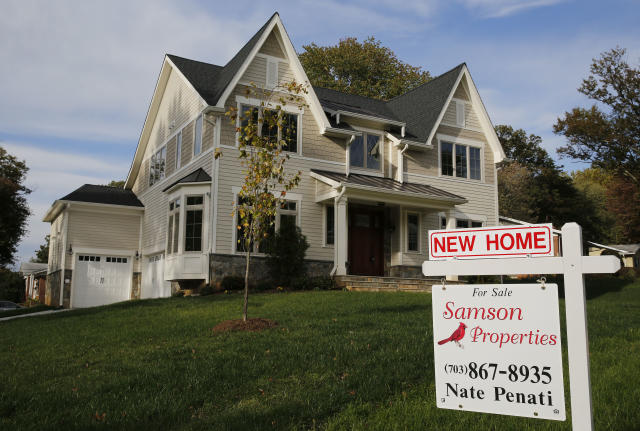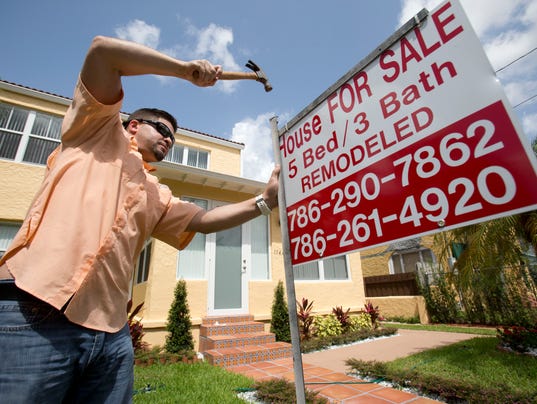By Jim Weiker
Say goodbye to shiplap siding and hello to green furniture.
And will 2017 finally be the year homeowners welcome something other than stainless steel into their kitchens?
To find out, The Dispatch spoke with design experts about what trends and fashions will be heading into central Ohio homes in the new year.
Green
Pantone, which bills itself as "the world-renowned authority on color," has identified "greenery" as 2017's color of the year. The "life-affirming shade" is a slightly muted bright nature tone.
"We've been watching green gain momentum in the last few seasons," said Sue Wadden, director of color marketing for Cleveland-based Sherwin Williams, whose 2017 color forecasts includes several shades of green.
Furniture, fabric, paint and wallpaper manufacturers responded with an array of products boldly decked out in green.
Experts say green illustrates a bolder use of color in general in homes, and a move away from the grays that have dominated interiors for the past several years.
Smart tech
Designers are mixed over the future of elaborate "smart-home" technology, which for some homeowners is more trouble than useful. (How many people will rely on an app to check their refrigerator temperature?)
Nonetheless, homeowners should expect to see more easy-to-use technology this year, such as smart door locks and smart light bulbs. Monica Miller, a designer with the J.S. Brown & Co. remodeling firm in Columbus, especially likes the Phillips Hue bulbs, which allow homeowners to adjust light through a smart phone without a lot of complicated wiring.
"Not only do you have the programability — we've had that for awhile — but with LEDs, you can change the color in the lamp," she said.
Marble
This classic countertop material took a backseat to granite and then quartz because it is vulnerable to staining, chipping and fading. But designers, drawn by marble's rich natural tones and timeless style, are returning to the material, especially for backsplashes and secondary countertops that don't get heavy use.
And for those still worried about marble's durability, a growing number of quartz companies are making a convincing faux marble.
"The look of marble is here to stay, whether you choose to go natural or with something like quartz," said Kerrie Kelly, the home-design expert for Zillow Digs.
Waterfall
Countertops are falling over the edge. Instead of ending an inch over the cabinets, countertop materials are increasingly being used for the sides of the kitchen island as well, in what is called a "waterfall" design. For decorators, the trend illustrates the growing desire for contemporary lines.
"Cleaner cabinet styles, simpler doors and less molding are in," Miller said.
Beyond stainless
Several appliance companies are rolling out alternatives to stainless steel in anticipation of that material's dominance finally giving way.
KitchenAid, Samsung and LG have introduced "black stainless steel," Jenn-Air sells "black floating glass" and GE offers "slate," all of them darker variations of stainless. In addition, several high-end European lines offer appliances in bold, bright shades.
And finally, classic white may be on the way back.
"People still love white-on-white kitchens," said Susan Matrka, owner of Susan Matrka Interiors in Columbus. "The icy white appliances pair up really well with white cabinets."
Velvet
Comfort is helping to push leather to the side on upholstered furniture. The soft weave of velvet in particular is expected to continue gaining ground this year, often in patterns.
"We're seeing velvet used in different ways," Kelly said. "People are looking for comfort and softness instead of the industrial look of leather."
Bold floors
Wood is expected to continue dominating under foot, but designers expect bolder floor treatments, especially in kitchens, to make a comeback this year.
"We're seeing things like texture, color and dimension — bold patterns used as a statement floor or statement wall," said Heather Johnson, director of marketing for the Hamilton Parker Co. in Columbus. "Outside of the bold, bright colors, we're talking about things that have actual patterns printed on the tile."
First-floor bars
Bars are coming out of the lower-level rec room onto the main floors of homes, reflecting the broader trend of illustrating that homes are becoming entertainment zones.
"The built-in bar plays off that livable design concept," Kelly said. "With built-in shelving, it makes hosting a lot of fun."


